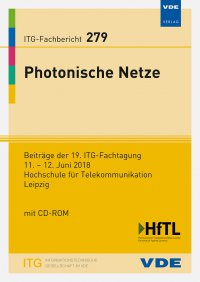Practical Trade-Offs for Kramers-Kronig Reception
Konferenz: Photonische Netze - 19. ITG-Fachtagung
11.06.2018 - 12.06.2018 in Leipzig, Deutschland
Tagungsband: Photonische Netze
Seiten: 7Sprache: EnglischTyp: PDF
Persönliche VDE-Mitglieder erhalten auf diesen Artikel 10% Rabatt
Autoren:
Sackey, Isaac; Elschner, Robert; Schmidt-Langhorst, Carsten; Emmerich, Robert; Schubert, Colja (Fraunhofer Institute for Telecommunications, Heinrich-Hertz-Institute, Berlin, Germany)
Inhalt:
The quest for high-capacity but cost-effective transmisson in short reach optical networks demands simplified system concepts which support the capability to modulate and receive complex modulated signals. One way to realize these goals may be the use of Kramers-Kronig (KK) technique. In its most simple implementation, this scheme allows the reception of complex modulation formats with a single photodiode. Thereby, in analogy to a heterodyne receiver, an additional continuous wave signal is used which allows under certain conditions the distortion-free reconstruction of the data signal. We present numerical studies on the KK reception of a single-channel 32-GBd single-polarization 32QAM signal and quantify the required trade-offs for the optimization parameters. We also present an experimental performance evaluations of the KK scheme. An optical signal-to-noise ratio (OSNR) penalty of about 0.8 dB is measured at a Q2-factor of 8.5 dB (i.e., corresponding to a bit-error ratio of 3.8×10-3) when compared with the performance of a single-polarization coherent receiver.


